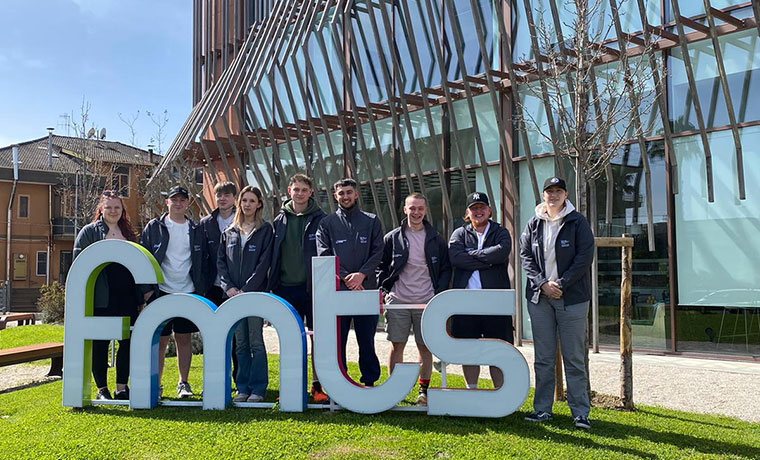Are there “too many cooks” in apprenticeships?

I don’t think I have ever known an educational scenario where at least 5 agencies are involved in the funding, policy and quality of one type of learning before, but that is what we see in apprenticeships.
Currently we have the Institute for Apprenticeship and Technical Education (IfATE), the Education and Skills Funding Agency (ESFA) on behalf of the Department for Education (DfE), Ofqual, Office for Students (OfS), and Ofsted.
There is a 19 page accountability statement explaining roles. Even IfATE in its strategic plan says “The current system is too complicated” and “Employers and potential learners find the wider skills system over-complex”.
Essentially the accountabilities are as follows:
- DfE, acting through the ESFA has overall accountability for the apprenticeship programme and all aspects of apprenticeships policy and strategy (functions – the Apprenticeship Service, the Register of Apprenticeship Training Providers and the Register of End-Point Assessment Organisations, and the funding and auditing of training providers).
- IfATE is accountable for designing and operating approvals and review processes for standards and assessment plans, and assuring their quality, strategic oversight of EQA, advising on funding bands ensuring good value for money, maintaining occupational maps, the development of T Levels and the approval of Higher Technical Qualifications.
- Ofsted is responsible for inspecting the quality of apprenticeship training provision at all levels and publishing the outcomes of the inspections.
- Ofqual is accountable for the regulation of qualifications, examinations and assessments in England, and for the external quality assurance (EQA) of apprenticeship End-Point Assessments EPA (except for integrated degree apprenticeships). It monitors the quality of EPA delivery, rectifies issues and takes regulatory or enforcement action where appropriate
- Office for Students (OfS) is responsible for the delivery of EQA for integrated degree apprenticeships in England. It was operated via the Designated Quality Board (DQB), but from 31 March 2023 the QAA no longer consent to be the DQB. So, from 1st April 2023 it will be operated by the OfS.
As a result of 5 organisations involved, we have a plethora of inconsistences and contradictions, and a lack of transparency and clear guidance. Here are some that I have experienced:
1) Language. Across the agencies, they do not use the same language. An apprenticeship standard and an apprentice are well known terms used by the IfATE, ESFA, Ofsted, DQB, employers and training providers. However, Ofqual do not use those terms because they do not fit with their legislative remit, instead, they call them qualifications and learners.
However, you could argue that it is no different to the other qualifications Ofqual regulate (GCSEs, A levels, AS levels, vocational and technical qualifications). The discrepancy in language extends to organisation type, the term end-point assessment organisation (EpAO), is used by all organisations other than Ofqual who refer to EpAOs as Awarding Organisations.
Another area causing confusion is that of Centres. Ofqual have their own unique definition, and it has (and still does) cause confusion across the sector. In the grand scheme of things, it is not a big issue, but it adds to the layers of misunderstanding and confusion.
2) Data. Publicly you can access data on the quality of apprenticeship training provision, and a whole range of data on apprentices by apprenticeship and provider, but in the world of end-point assessment, no such data exists.
The ESFA funding rules (P161) make it clear that an employer selects the EpAO, but how can an employer make an informed selection when they have no data or quality metrics to enable their decision? This is not the fault of the EpAOs, in fact many would welcome the opportunity of more transparent reporting. The agencies need to work together to agree a set of metrics and decide who publishes it, who monitors and, where required, who takes action?
3) Packaging / bundling. The ESFA conditions for EpAOs do not allow EPA to be part of a wider offer. However, the latest IfATE consultation proposes embedding qualifications into the EPA, of which the unintended consequence is to bring in bundling.
For example, packaging the qualification fee in with the end-point assessment fee, and/or encouraging employers and training providers to work with awarding organisations that offer both the qualification and the end-point assessment. The agencies need to work together to agree the approach, do they or do they not accept bundling? If they do allow it, how can they guarantee an equitable market, and how will they address transgressions.
The reason my last point is important is because I am repeatedly hearing reports of EpAO bundling, mostly via phone calls, such as “if you don’t use us as for EPA you will not be able to register for our other qualifications”, or “if you don’t use us for both qualifications and EPA, we will not be able to offer the prices we do”.
4) ESFA rules versus Ofqual Conditions. Both the ESFA and Ofqual require applicants to detail their organisation and governance structures, and both organisations focus on conflict-of-interest management. However, there is a discrepancy between them.
The ESFA Conditions state “you do not deliver on-programme training and EPA for the same group of apprentices for the same standard”, whereas Ofqual focuses on the organisation’s ability to demonstrate sufficient separation across governance and the qualification lifecycle, which means that, with sufficient separation, a training provider can also be an EpAO for the same standard.
There needs to be clearer, joined up, messaging around this area, and data transparency around the selection of EpAO would support this.
5) Assessment Plan and Ofqual contradictions. There are many examples of where the Ofqual conditions do not complement the assessment plan, and in some cases directly contradict the assessment plan. In these scenarios does Ofqual top trump the assessment plan, or does the assessment plan top trump Ofqual?
Rather than top trumps, it would be better for the agencies to jointly agree to what would be reasonable and appropriate mitigations and to publish them for existing standards, alongside advice for trailblazer groups when designing standards.
The most common area of contradiction relates to the application of Ofqual Condition G4 on confidentiality:
- a) Assessment plans require industry expertise, and there are a number that require assessors to have current experience (eg Engineering Fitter, Rail and Rail Systems Engineer). Whilst an EpAO can put in place a conflict-of-interest policy to make sure that their assessors never assess those they have trained, worked with or line managed, when there is a small pool of people with the appropriate expertise to assess (especially in specialist occupations) it may be impossible to source an assessor than never trains or works with any apprentices on that standard, which is what Condition G4 would require (no one with knowledge of the assessment can deliver the training).
- b) Some assessment plans require assessors to be, or have experience in, teaching / assessing / training line managing in the area they are assessing (eg Project Controls Technician, Accident Repair Technician, Train Driver), this directly contravenes Condition G4.
- c) Some assessment plans require EpAOs to work with employers to design, develop, or approve assessment materials (Project Controls Technician, Engineering Design and Draughtsperson, Sporting Excellence Professional). Whilst an EpAO may have in place confidentiality agreements, it still risks being in breach of condition G4 as those employers will glean knowledge of the assessments and will therefore risk consciously or unconsciously breaching confidentiality when training apprentices (under condition G4, employers providing training to learners fall under the classification of ‘teacher’ – Ofqual Condition G4 guidance).
However, when it comes to condition G4, I am aware that others interpret the conditions differently. The fact that there can differing interpretations, suggests that Ofqual / ESFA / IfATE need to provide clear unambiguous guidance, with examples, in this area for EpAOs, so that they do not accidentally or unintentionally fall foul of the Ofqual condition when designing or delivering end-point assessment.
6) Reasonable Adjustments. There is a need for an agreed and open framework that both the IfATE and the regulators sign up to. IfATE has produced a matrix for reasonable adjustments, but it is not referenced by Ofqual in their guidance, nor does the IfATE state whether the matrix is accepted by Ofqual. I understand that IfATE are currently reviewing this matrix so it would be good to see the outcome of this in relation to joined up thinking and approach to its application and monitoring.
7) Safeguarding. Ofsted, rightly, places a lot of emphasis on the safeguarding of learners in training, and yet safeguarding barely gets a mention in relation to end-point assessment documentation. The ESFA conditions for EpAOs, the DQB handbook, and Ofqual do not mention safeguarding, although you could argue that they allude to it via statements such as “protecting the interest of learners”.
The ESFA conditions section 7 state that the provider maintains a continuing duty of care, who in turn will have a continuing duty of care for the apprentice as they undertake EPA, and as such safeguarding should remain as high a priority during EPA as it is during training. There is a need for clear guidance and monitoring in this area to ensure that safeguarding applies across all component parts of an apprenticeship.
8) Applications. When Standards and assessment plans are revised the ESFA issues a new version number, but there is no information in the public domain from the ESFA/Ofqual/IfATE about what happens next for EpAOs. Currently, the ESFA requires an EpAO to apply to be able to EPA the new version, but Ofqual does not require an EpAO to expand their scope of recognition to the new version. To ensure understanding and consistent application, the process needs to be published by the agencies.
To round things up, who ultimately leads and takes responsibility to ensure joined up working, or is really down to a game of top trumps? In the ESFA Conditions for EpAOs it is made clear that their conditions take priority over other ESFA documents: “In the event of any conflict between the conditions set out in this document and any other documents produced by us relating to EPA, this document takes priority,” but there is no such approach across the other organisations and documents (IfATE, Ofqual, DQB, assessment plans). Personally, I would far rather see the organisations working together to jointly agree and publish approaches making sure they do not contradict each other along the way.
By Jacqui Molkenthin, Consultant and researcher in EpAO start-up, quality assurance, compliance (Ofqual), & growth at JEML Consulting











Responses